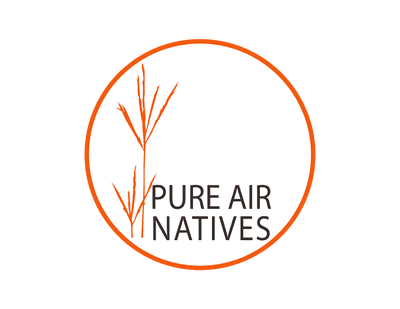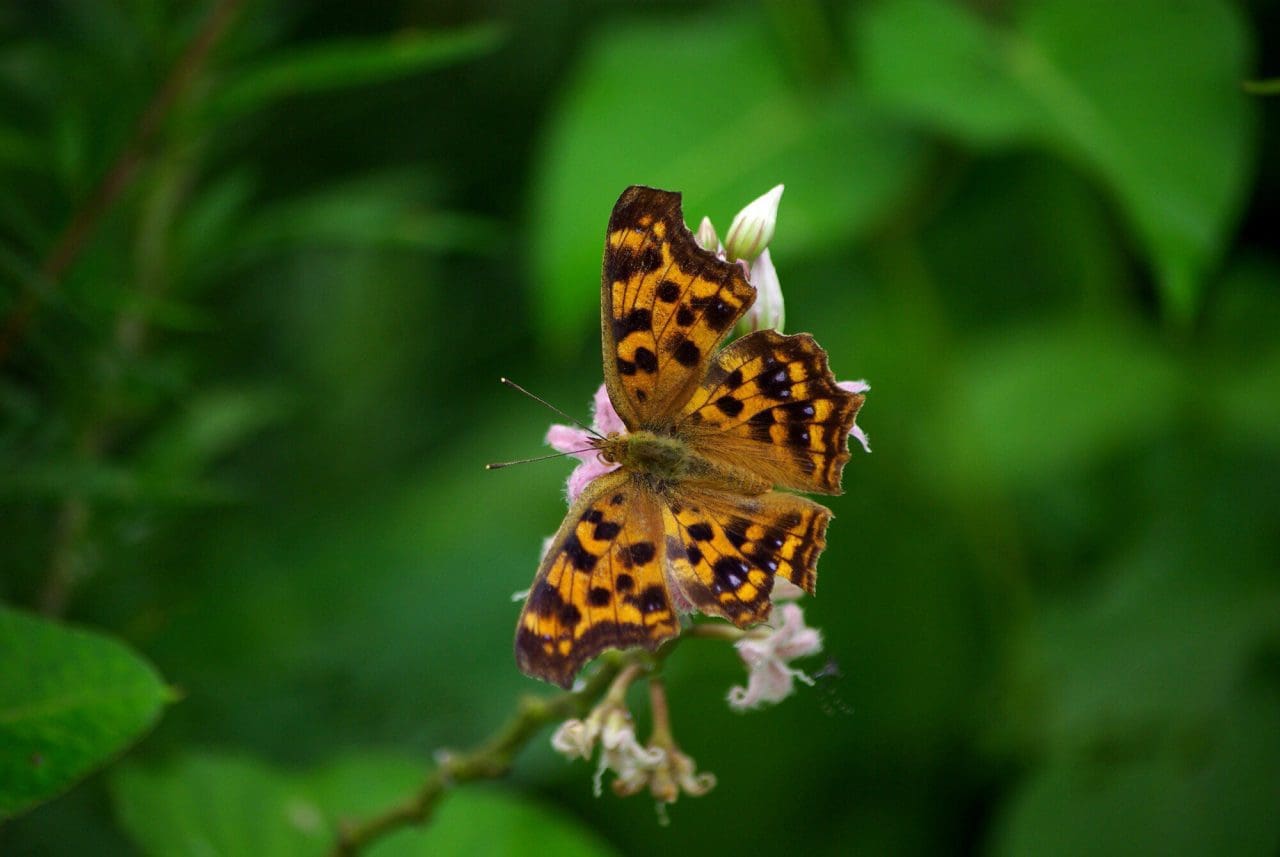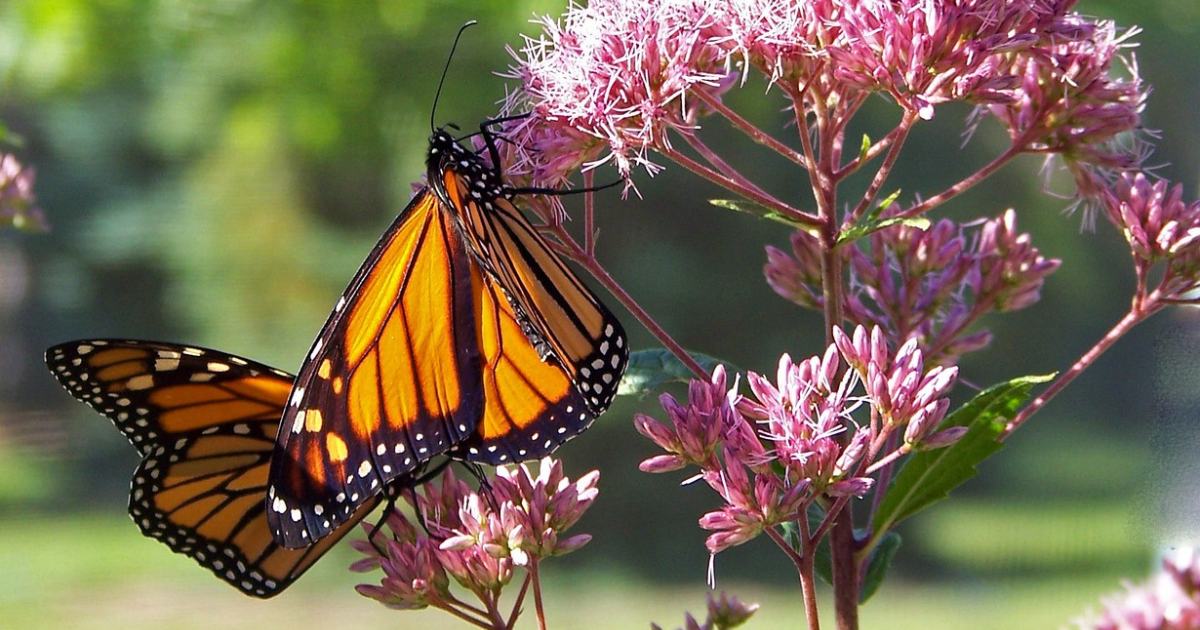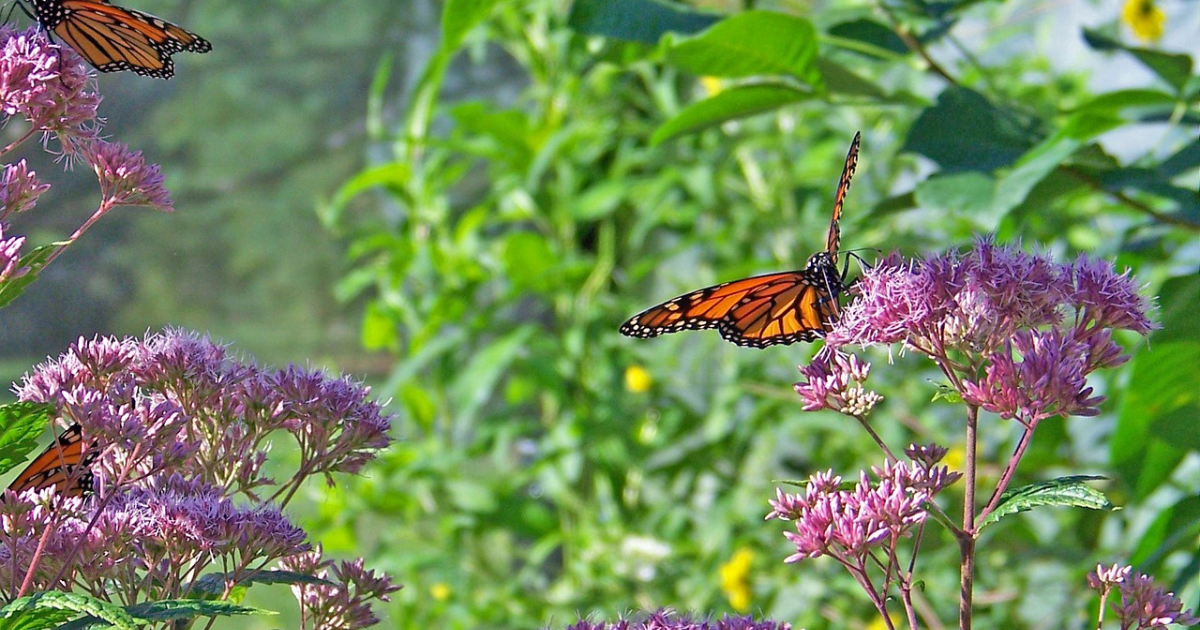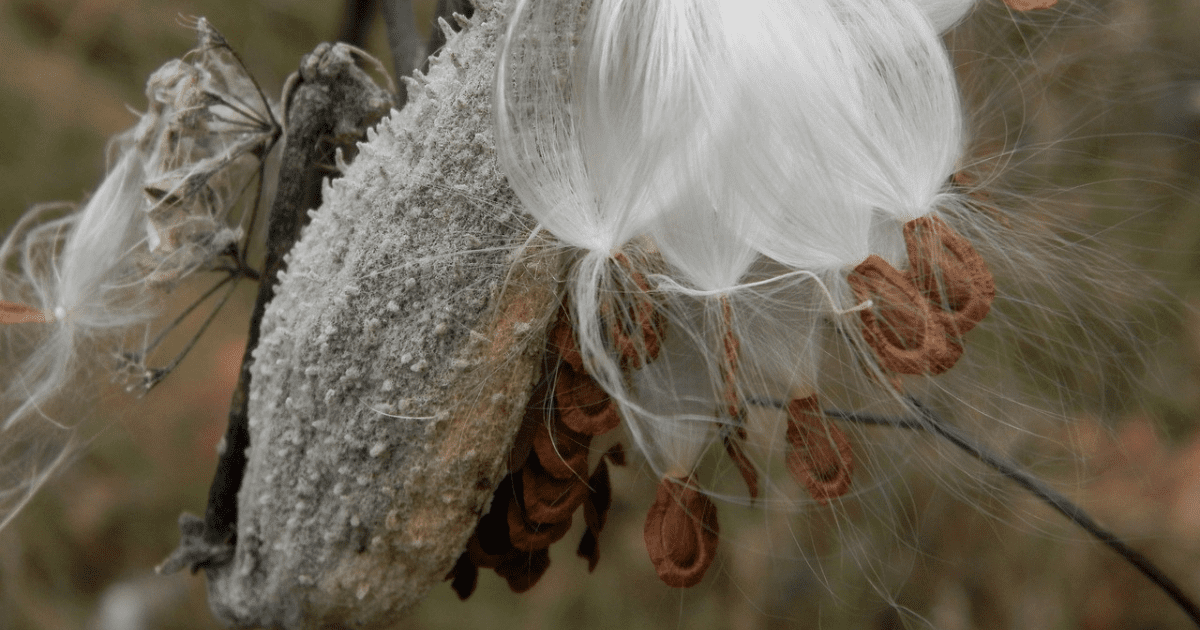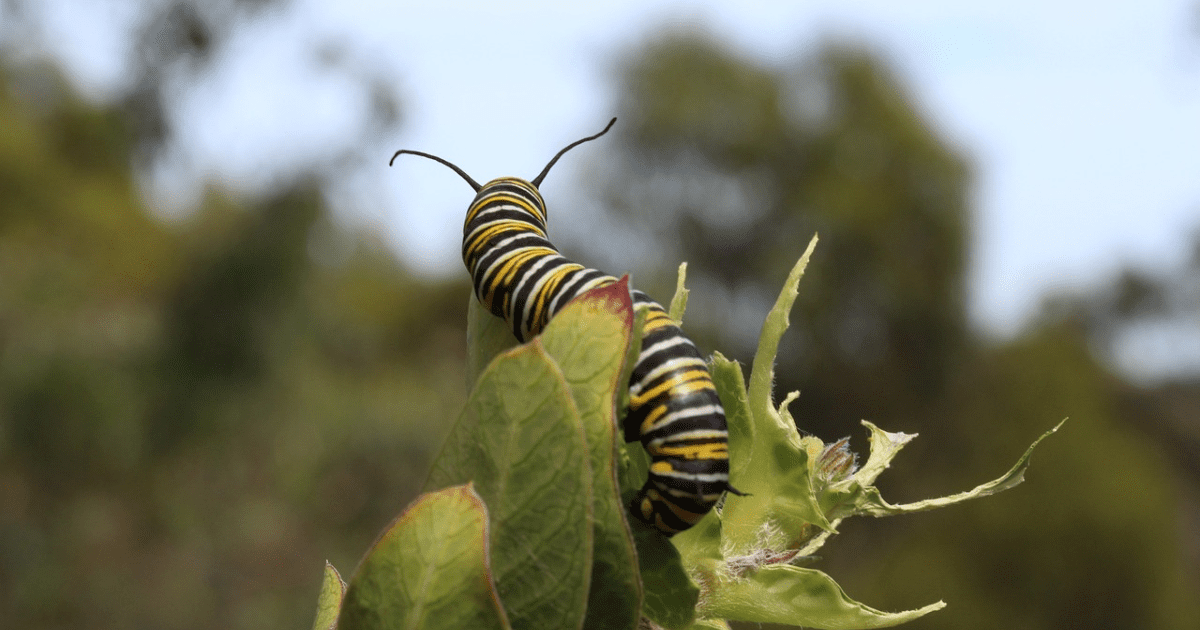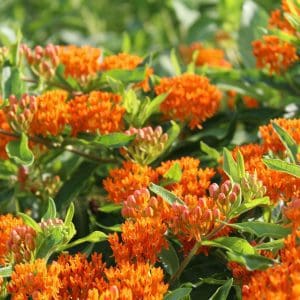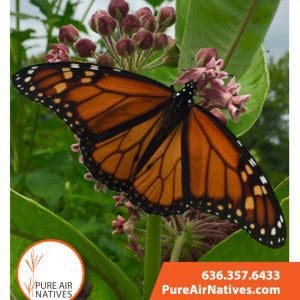Why Monarch Butterflies Need Native Milkweed Seeds To Survive
Not too long ago, wild grasses, sedges, and wildflowers covered America. These native prairies were home to many species and played an integral part in their ecosystem. Local wildlife used the plants for cover and food while giving the soil nutrients that were perfect for growing crops.
However, as civilization and industrialization expanded, these prairies and wildflowers were cut down and demolished to make room for farms, houses, and infrastructure.
This change impacted every form of wildlife. Instead of being able to freely roam, they are now confined to only patches of land with enough native plants. Pollinators, especially monarch butterflies, took the brunt of this impact because they are dependent on wildflowers as their food source.
Let’s dive into how planting milkweed native to your area can help monarch butterflies and other pollinators bounce back and start thriving again. Native gardening and landscaping is the best way to give back to nature and draw pollinators to your property..
- Why Is Milkweed Important To Monarch Butterflies?
- Monarch Butterfly Food Is Scarce
- Monarch and Milkweed Relationship: Why Do Monarch Butterflies Like Milkweed?
- Milkweed Plant Benefits
- Fall or Spring: When To Plant Milkweed Seeds
- When To Collect Milkweed Pods
- Best Milkweed Seeds For Monarch Butterflies
- Which Milkweed Strain Is Bad For Monarchs?
- Top Milkweed Seeds & Mixes For Monarchs And Pollinators
- Need Help Choosing The Right Native Seeds?
Why Is Milkweed Important To Monarch Butterflies?
When thinking about Monarch butterflies, it’s inevitable that the word “milkweed” will come to mind. This beautiful, colorful native plant not only contrasts beautifully with the color of Monarchs, but it’s also the sole reason Monarch butterflies survive.
Let’s dive into why you should plant milkweed.
Monarch Butterfly Food Is Scarce
In 2014, monarch butterflies became an endangered species. A large reason for their engagement is a reduction in milkweed patches due to human expansion. The main way to get monarch butterflies off of the endangered species list is by planting more milkweed.
Milkweed is a vital aspect of the monarch butterfly’s life cycle. It’s the only plant that monarchs can lay their eggs on because it’s the only plant their caterpillars can eat.
Monarch butterflies migrate from Canada/Northern United States to Mexico/Southern United States. As they migrate, they need to consume nectar. Milkweed plants offer a delicious meal because the sugar content of the nectar is higher than that of other plants.
The more availability of milkweed plants, the more monarchs will survive their migration. In the winter, when monarch butterflies are on their way to the southern hemisphere, they need a place to stay and recharge on their journey.
Missouri and surrounding states are right in the middle of their path, which makes native landscaping even more crucial. Patches of milkweed offer a safe area for monarchs to both get food and lay eggs.
Monarch and Milkweed Relationship: Why Do Monarch Butterflies Like Milkweed?
Monarchs and milkweed have co-evolved to exclusively rely on each other. Monarch butterflies rely on milkweed as their exclusive host plant for egg-laying. Monarch larvae and caterpillars can only eat milkweed leaves.
Milkweed contains toxic compounds, called cardenolides, that protect the caterpillars from predators. Though toxic to every other animal, Monarchs are immune to the toxic compounds in milkweed. Since Monarchs eat and digest these harmful compounds, predators know from experience not to eat Monarch butterflies.
In return, Monarchs pollinate the milkweed. Understanding this unique partnership is key when trying to attract Monarchs to your backyard or native prairie.
As you can see, the availability of milkweed directly affects the Monarch butterfly population. Conservation efforts aim to preserve milkweed habitats to support their survival.
Milkweed Plant Benefits
Here are some milkweed benefits for native home gardeners, Monarch enthusiasts, and property owners!
1. Milkweed is a beginner-friendly native plant.
They are perennial, which means they will come back year after year. You won’t have to replant them year after year, which takes a lot of stress out of the process. Low maintenance and easy to grow! It’s also deer resistant, which is a big benefit as it’s one of the tallest wildflowers out there.
2. Can grow in dry environments.
The Midwest is known for being dry, but you won’t need to worry about common milkweed and butterfly milkweed. Their strong stems allow them to withstand dry conditions and you won’t have to worry about supporting their stems.
3. Very colorful and eye-catching.
Brightly colored monarchs and vibrant bees are just the tip of the iceberg. Milkweed comes in a variety of bright colors. Orange, pink, and yellow star-shaped flowers offer a strong pop of color to any garden or farm area.
4. No serious pests attack milkweed plants.
Milkweed doesn’t have any serious predators, which allows you to spend less time taking care of them and more time looking at the pollinators they attract! This also means you won’t need to use pesticides to protect the plant.
5. Milkweed can last for up to 20 years.
Every fall, new seed pods will develop, and you can use these seed pods to plant more milkweed for the next season. A one-time purchase can provide so much food and joy!
6. Attracts many types of pollinators!
The bright color of the flowers and the easy nectar access points are a big invitation for pollinators. Pollen sticks to the bees, wasps, bugs, and hummingbirds, who’ll be sure to give your milkweed garden buffet a visit.
7. Milkweed is a natural pest control.
Milkweed, like other plants, can attract aphids. But don’t worry! A variety of aphid eaters won’t be far behind. Ladybugs, damsel bugs, and lacewings are just some of the aphid eaters that will show up to protect the plants.
If you have other plants, milkweed’s attractive properties are a natural, pesticide-free way to protect your other plants.
In short, because milkweed is native to the U.S., it doesn’t require much maintenance and is easy to start with for those who are interested in native landscaping.
Fall or Spring: When To Plant Milkweed Seeds
Milkweed seeds are best planted in the fall because they require cold stratification. The Midwest has very cold temperatures in the fall and winter, and native plants like milkweed are used to this. A period of cold helps break this seed’s dormancy cycle and spur it into germinating.
If you plant in the fall, mother nature will give them the winter cold they need and milkweed will start growing in summer. This is the most hands-off, natural method.
If you decide to plant in spring, simply put milkweed seeds on a moist paper towel, fold them into a ziploc bag and refrigerate it for at least 3 weeks before planting. Pick a bright sunny spot, spread the seed out (don’t cover them), and then compress the seed down a bit.
Milkweeds generally have a long bloom window, so as long as you’re not super late to the party, you’ll be able to enjoy seeing your milkweed sprout in the Summer.
Either way, make sure your milkweed will get full sunlight. Shady areas won’t give this native plant the energy it needs.
If you’re interested in a comprehensive wildflower mix that will help support Monarchs and other butterflies, check out Pure Air Native’s Monarch Habitat Wildflower Seed Mix. This is one of our best-selling mixes, and one we’re sure you (and fellow pollinators) will love.
When To Collect Milkweed Pods
In late summer, Milkweed plants begin to produce pods. They’re filled with milkweed seeds and floss, a piece of material attached to the seed that allows it to travel in the wind.
The best time to harvest milkweed pods in the Midwest is from September to November. You’ll want to make sure that the pods are fully dry, firm, brown, and closed. This indicates the seeds inside are fully developed and ready to be collected.
To double-check, apply slight pressure against its seam. If it doesn’t split open, then the pod isn’t ripe yet. Disregard open or soft pods.
Here’s what to do when milkweed pods start to appear:
- Leave the milkweed pods be and let nature run its course.
- In late fall, break the pods and scatter the seeds on the ground.
- Collect the pods and save the seeds for the next planting season.
As we’ve mentioned, milkweed is a hardy plant, so it’s hard to collect milkweed pods wrong. Just make sure the seeds are dry and cold, and you’ll be ready to plant in the fall!
Best Milkweed Seeds For Monarch Butterflies
There are several types of milkweed, some of which are better suited for Monarchs than others. Let’s see which types are the best for you.
Which Milkweed Strain Is Bad For Monarchs?
Though we know milkweed is the best food source for monarchs, not every milkweed plant is safe for the Midwest ecosystem.
Tropical milkweed (Asclepias curassavica) is the same milkweed Monarch butterflies feed on when they migrate down South for the winter. Though it may seem like a good idea to plant at first, in reality, growing this type of milkweed in the North confuses the Monarchs and harms their migration and reproduction cycles.
This is why this type of milkweed was deemed illegal and banned in Missouri in 2022.
Top Milkweed Seeds & Mixes For Monarchs And Pollinators
Let’s face it, you never want to buy seeds from a company you don’t trust because you don’t know the actual quality of their seeds. With Pure Air Natives, that’s a worry of the past.
We’ve been a seed supplier for almost 30 years and our team has 250+ years of combined ecological experience. All of our seeds are third-party tested and PLS certified, meaning you won’t be getting any weeds in your seeds. We only sell purest quality live seed that is guaranteed to germinate.
Here are our 4 top milkweed seeds and mixes. Each contains plenty of milkweed that will attract Monarch butterflies to your land and help support their population.
Butterfly Milkweed Seeds
This milkweed seed lives up to its name! Not only a favorite for home gardeners, but also a magnet for Monarch butterflies and other pollinators. Approximately 100 seeds, which will cover a 5′ x 5′ area. For larger home areas, we suggest buying 3+ packets.
Common Milkweed Seeds
Common Milkweed lives up to its name. It quickly establishes itself and grows 3 to 5 feet tall! It’s impossible for Monarch butterflies and pollinators to miss these beautiful pink and violet blossoms in spring!
Contains approximately 150 seeds.
Monarch Mix Packet
Plant this wildflower mix packet anywhere in a sunny area, and watch it grow! This mix will still provide plenty of supplement for Monarchs, but also give home owners the colorful variety they’re often looking for! Containing plants of all colors of the rainbow, this gorgeous mix will definitively bring all the pollinators to your yard this spring!
Here are the main native wildflowers included in this mix. View product page to see all of the species included. Contains approximately 100 seeds.
- Butterfly Milkweed (Asclepias tuberosa)
- Plains Coreopsis (Coreopsis tinctoria)
- Black-Eyed Susan (Rudbeckia hirta)
- Purple Coneflower (Echinacea purpurea)
- Pale Purple Coneflower (Echinacea pallida)
Monarch Habitat Seed Mix
For those with more land, Pure Air Natives also provides bulk Monarch grass and wildflower mixes for 1000 square feet, quarter acre, half acre, 3/4 acre, and acre plots. If you’re buying more than one acre of seed mix, be sure to give us a call for discounted wholesale pricing.
We also offer seed installation services if you’d prefer to outsource prairie restoration.
Need Help Choosing The Right Native Seeds?
Pure Air Natives has been supplying American Native seed to the Midwest for 25+ years. We believe that every seed we put in the ground is an improvement to our environment.
Having a plan for annual seeding is an important part of your prairie, farmland planting, and backyard gardening.
If you need help with establishing a monarch garden, a native pollinator haven, or a prairie, give us a call! We help landowners, farmers, and companies restore prairies and grow native plants in the Midwest.
We can help you find the perfect milkweed plant for you. Pure Air Natives can also help you install your native seed.
Call us today at 636 357 6433 or fill out this contact form for a custom seed mix quote. We look forward to helping you build a native landscape.
Don’t forget to sign up up below to get 5% off your next order!
